*NURSING > EXAM > NURSING 119-Chapter 31: Assessment of Cardiovascular System Lewis: Medical-Surgical Nursing, 10th Ed (All)
NURSING 119-Chapter 31: Assessment of Cardiovascular System Lewis: Medical-Surgical Nursing, 10th Edition-2022
Document Content and Description Below
Chapter 31: Assessment of Cardiovascular System Lewis: Medical-Surgical Nursing, 10th Edition MULTIPLE CHOICE 1. A 74-yr-old patient has just arrived in the emergency department. After assess... ment reveals a pulse deficit of 46 beats, the nurse will anticipate that the patient may require a. emergent cardioversion. b. a cardiac catheterization. c. hourly blood pressure (BP) checks. d. electrocardiographic (ECG) monitoring. ANS: D Pulse deficit is a difference between simultaneously obtained apical and radial pulses. It indicates that there may be a cardiac dysrhythmia that would best be detected with ECG monitoring. Frequent BP monitoring, cardiac catheterization, and emergent cardioversion are used for diagnosis and/or treatment of cardiovascular disorders but would not be as helpful in determining the immediate reason for the pulse deficit. DIF: Cognitive Level: Apply (application) REF: 668 TOP: Nursing Process: Planning MSC: NCLEX: Physiological Integrity 2. The nurse is reviewing the 12-lead electrocardiograph (ECG) for a healthy 74-yr-old patient who is having an annual physical examination. What finding is of most concern to the nurse? a. A right bundle-branch block. c. The QRS duration is 0.13 seconds. b. The PR interval is 0.21 seconds. d. The heart rate (HR) is 41 beats/min. ANS: D The resting HR does not change with aging, so the decrease in HR requires further investigation. Bundle-branch block and slight increases in PR interval or QRS duration are common in older individuals because of increases in conduction time through the AV node, bundle of His, and bundle branches. DIF: Cognitive Level: Analyze (analysis) REF: 662 TOP: Nursing Process: Assessment MSC: NCLEX: Physiological Integrity 3. During a physical examination of an older patient, the nurse palpates the point of maximal impulse (PMI) in the sixth intercostal space lateral to the left midclavicular line. The best follow-up action for the nurse to take will be to a. ask about risk factors for atherosclerosis. b. determine family history of heart disease. CONTINUED..... [Show More]
Last updated: 2 years ago
Preview 1 out of 10 pages
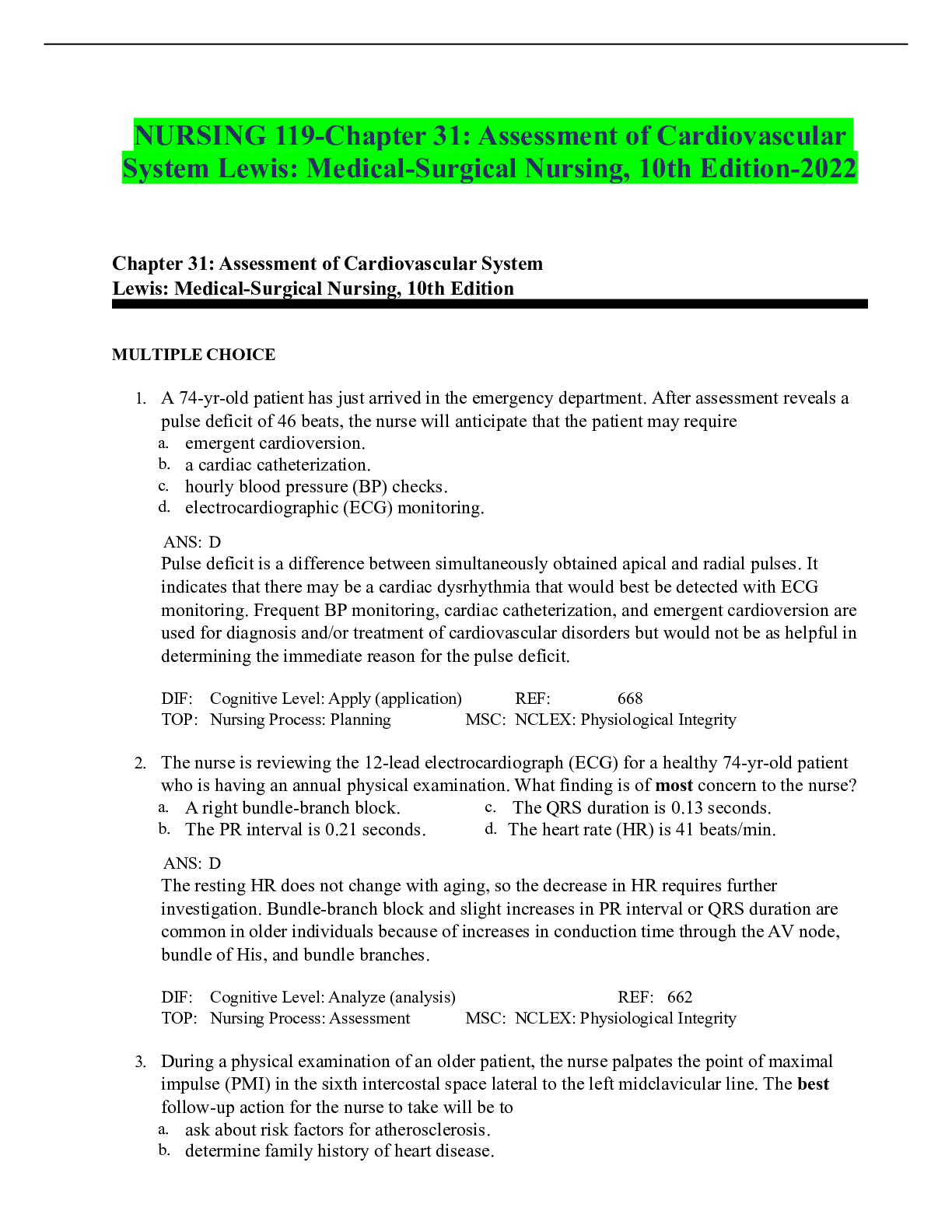
Buy this document to get the full access instantly
Instant Download Access after purchase
Buy NowInstant download
We Accept:

Reviews( 0 )
$5.00
Can't find what you want? Try our AI powered Search
Document information
Connected school, study & course
About the document
Uploaded On
Aug 29, 2022
Number of pages
10
Written in
Additional information
This document has been written for:
Uploaded
Aug 29, 2022
Downloads
0
Views
62



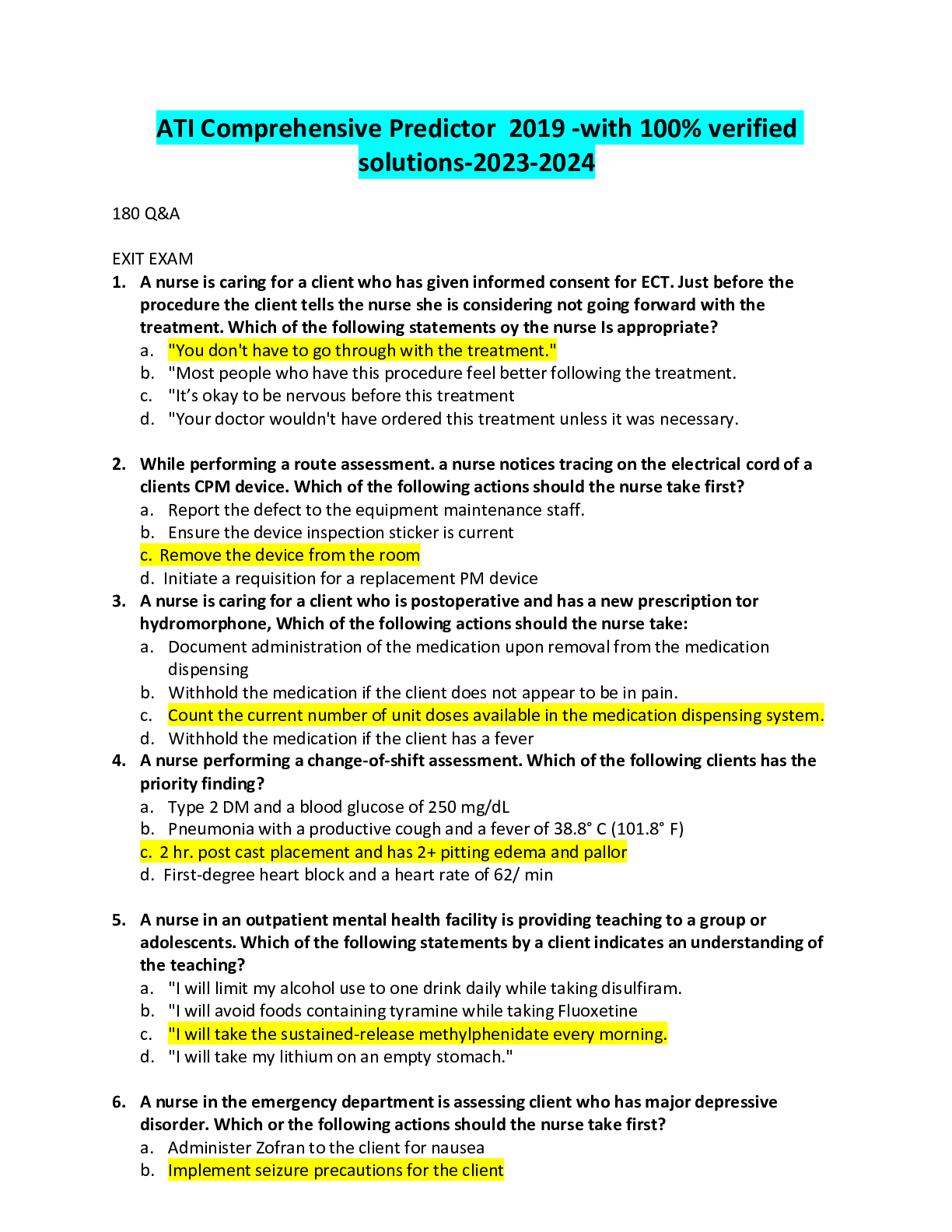



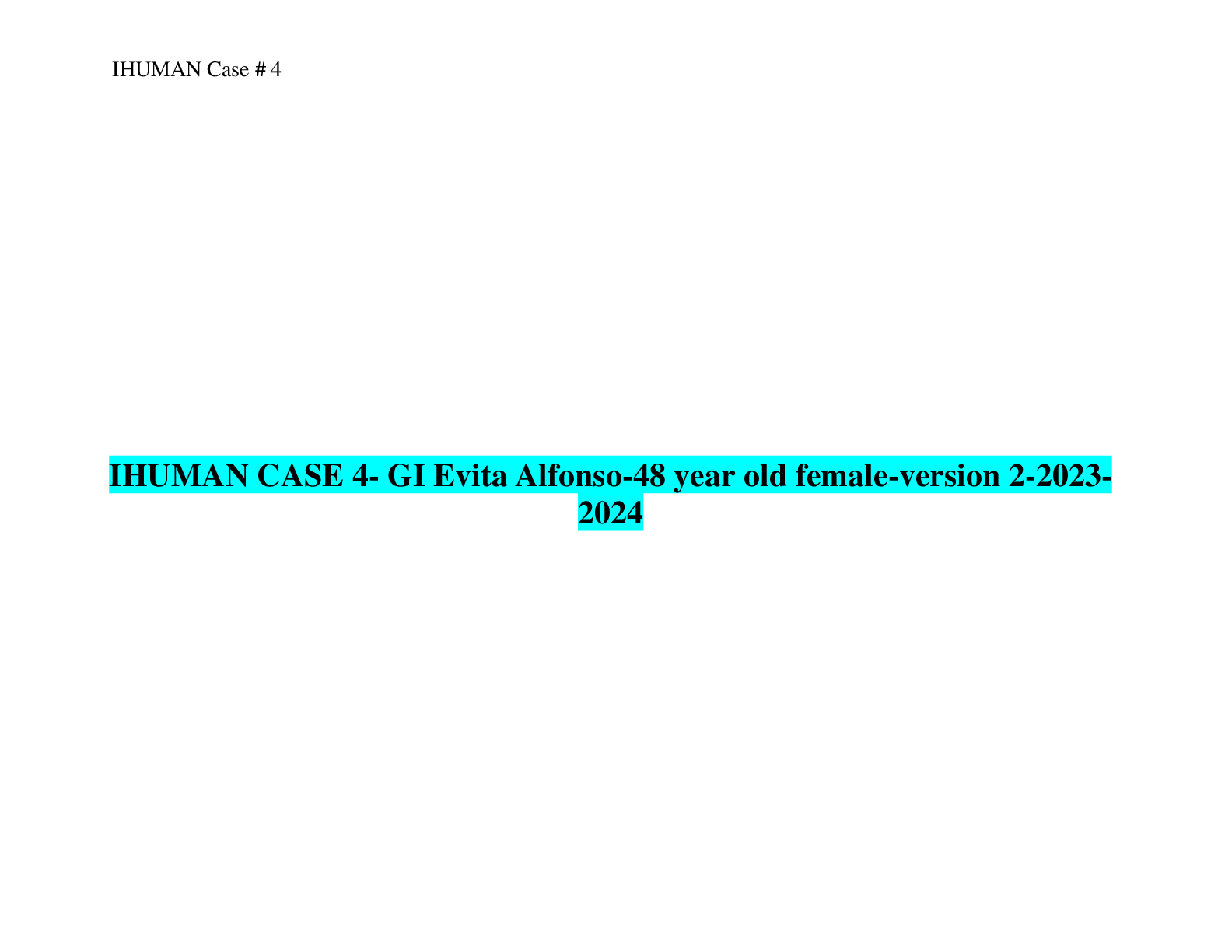






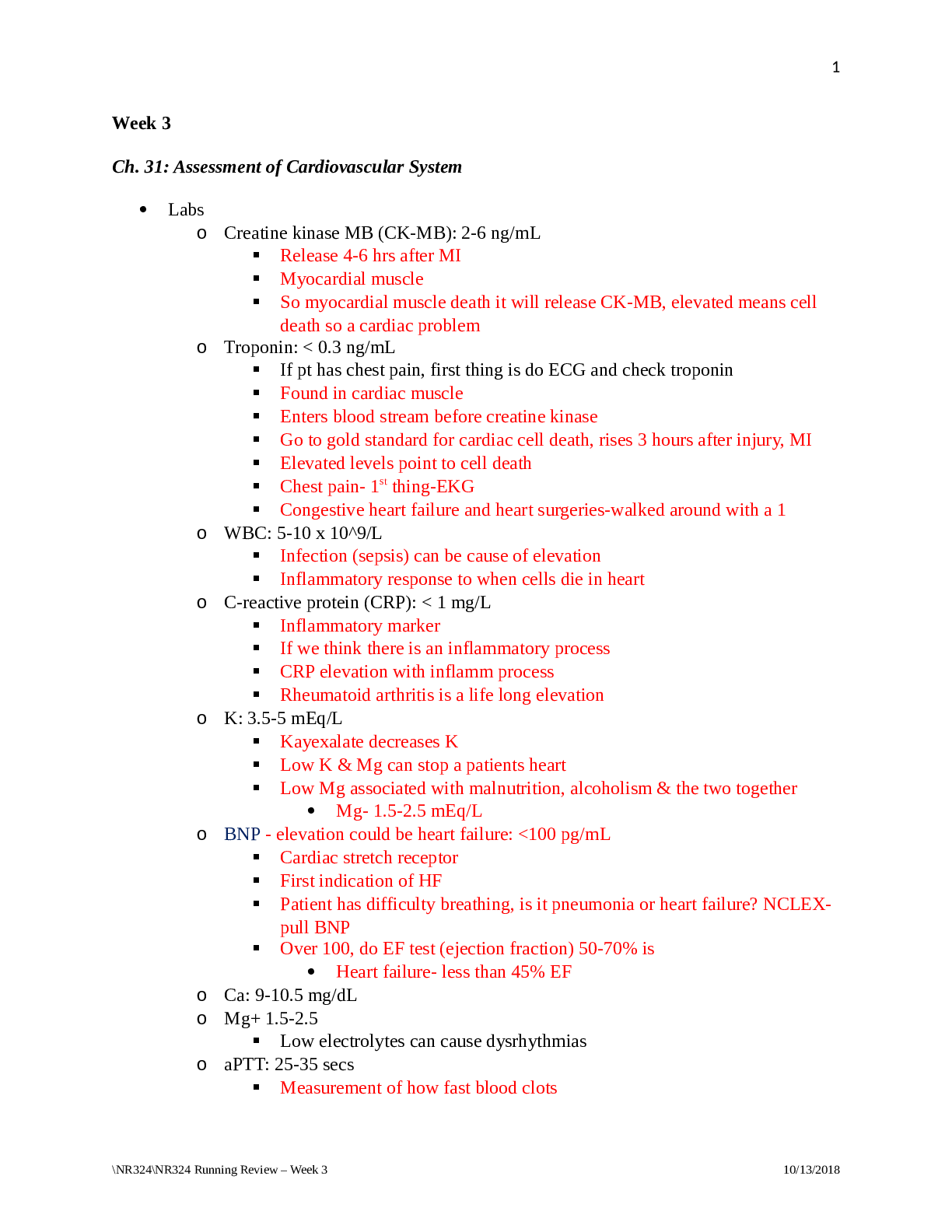




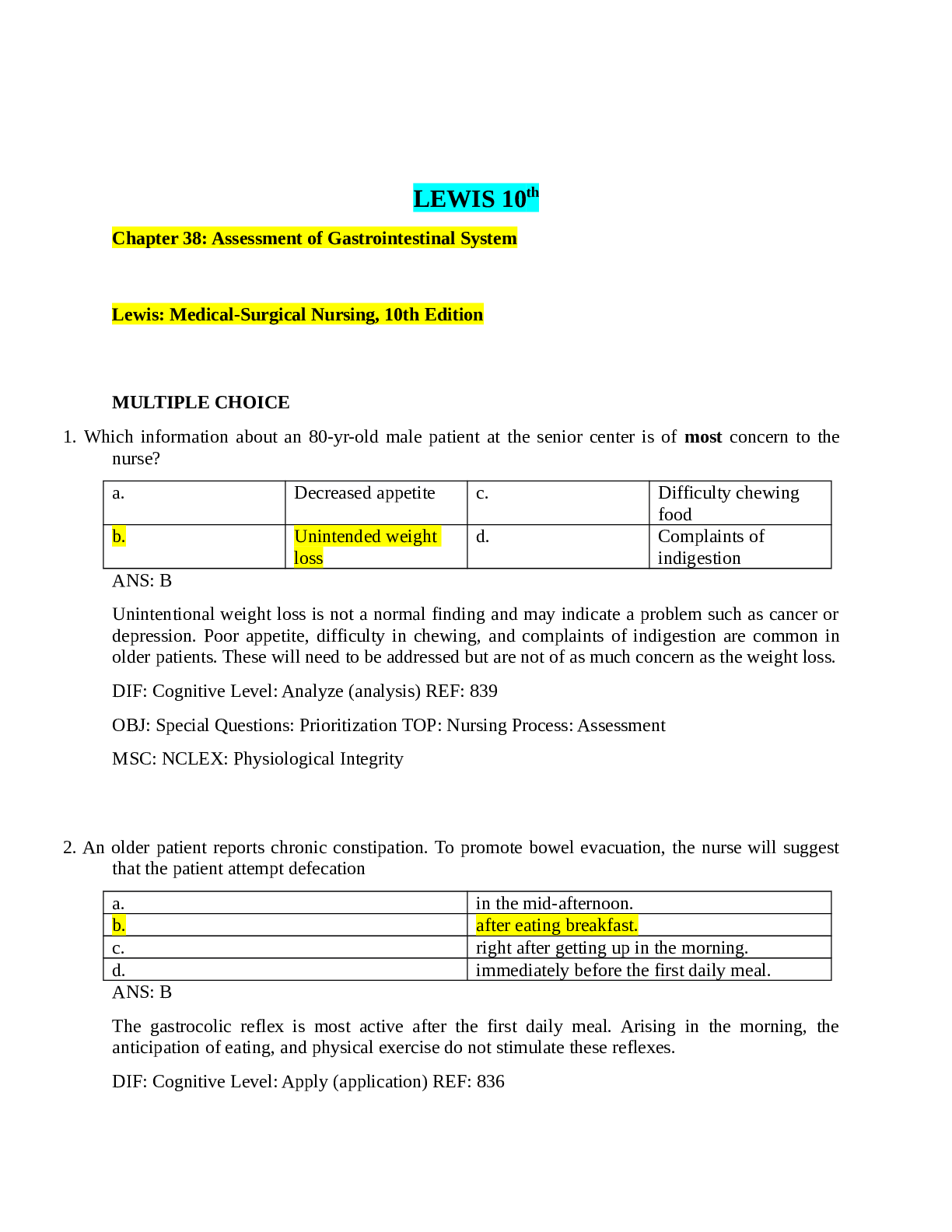
.png)
 (1).png)
 (1).png)
 (1).png)

